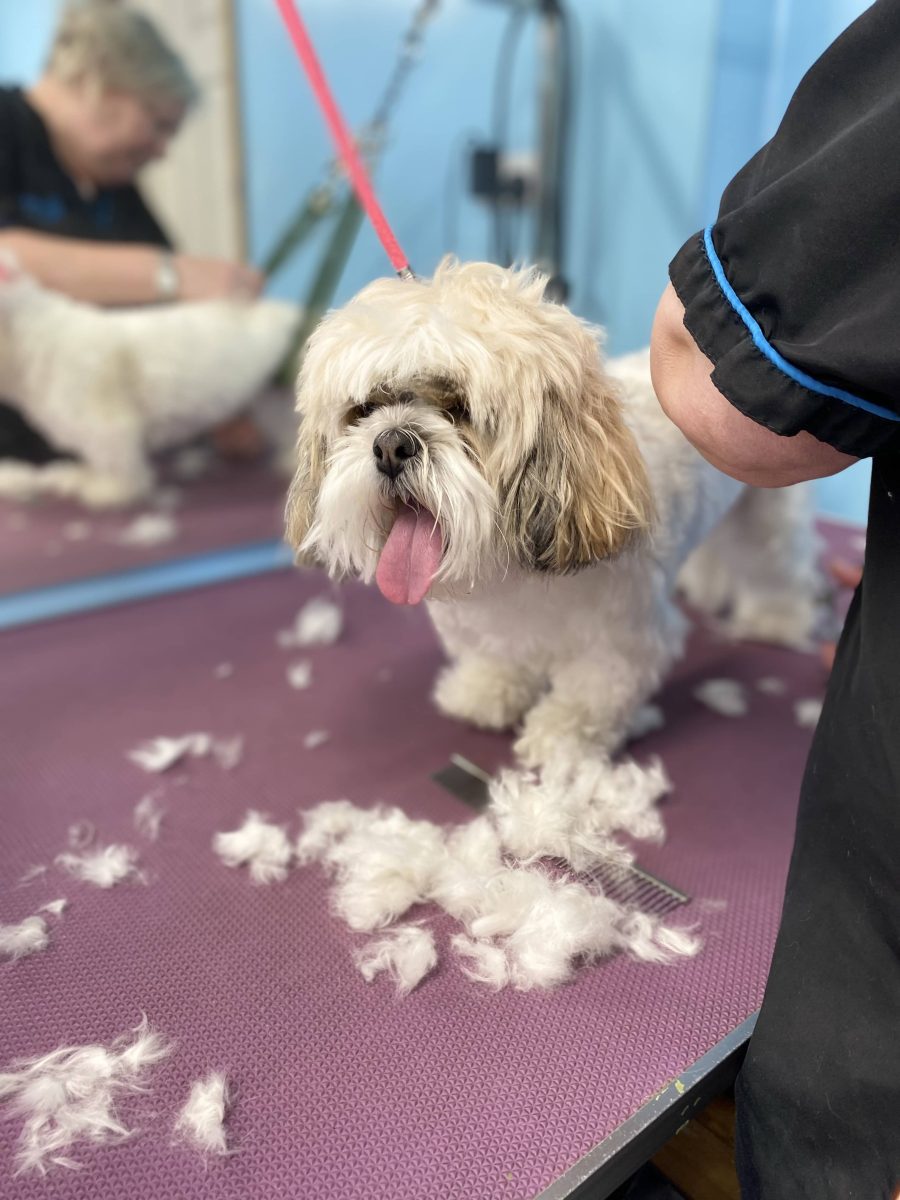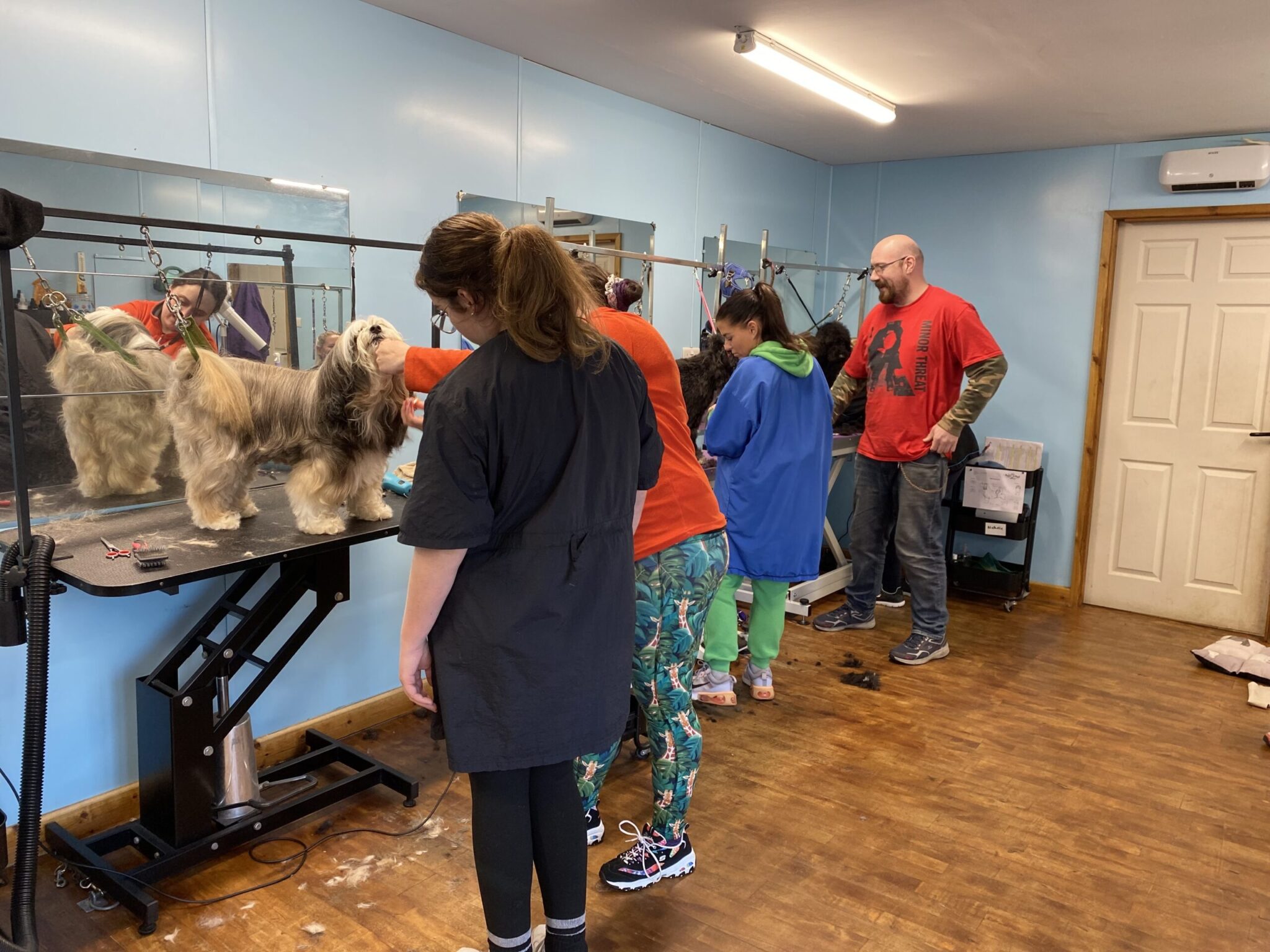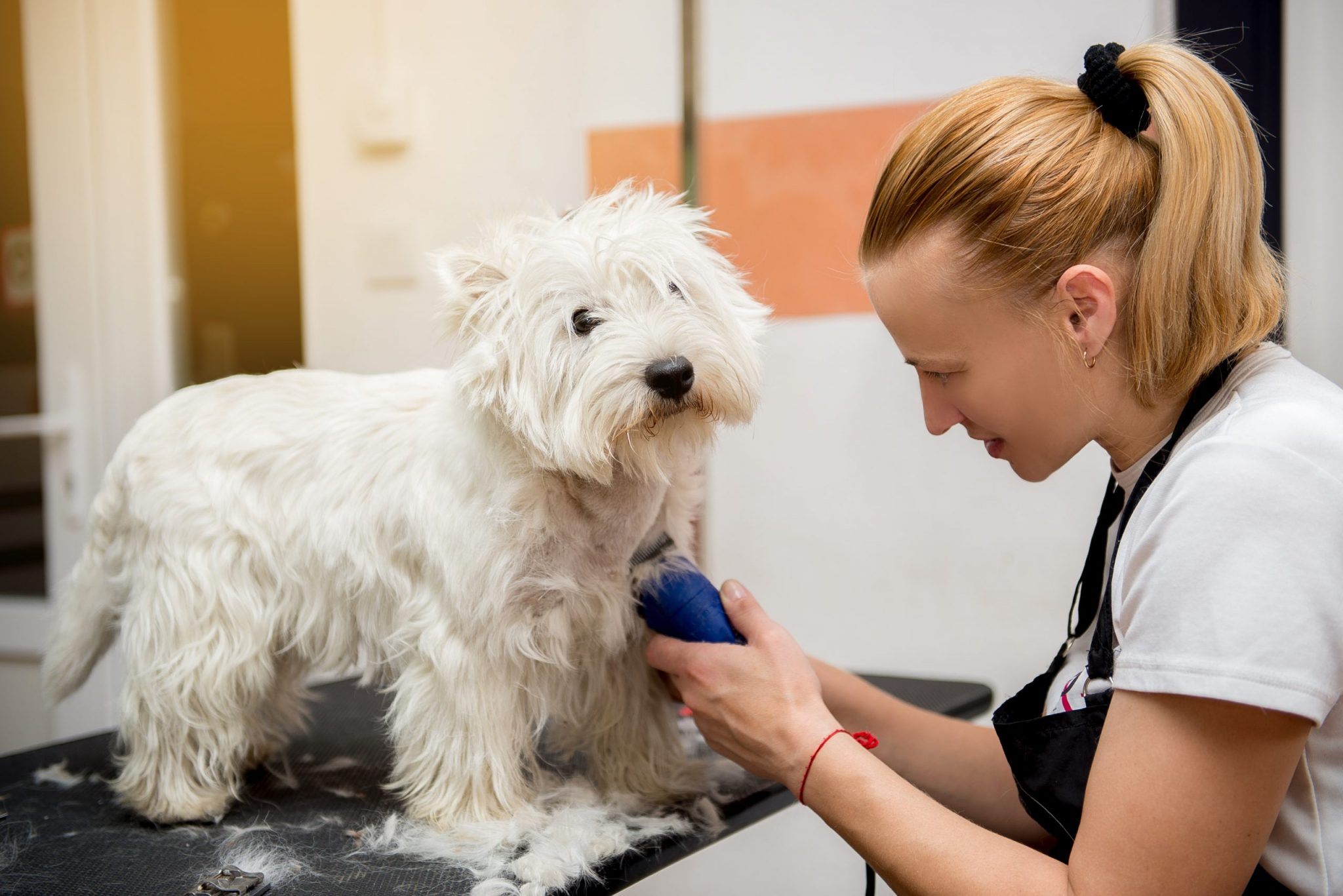Did you know regular grooming significantly affects your dog’s happiness and overall well-being?
It’s not just about keeping them clean and comfy; it’s a health check-up, too! Grooming helps uncover sneaky lumps and bumps hiding under your dog’s coat.
But let’s talk about a part often overlooked in dog grooming—the paws.
From zoomies at the park to snuggles on the couch, your dog’s paws are a crucial part of their canine adventures.
That’s why giving them a proper groom is a big deal. Skipping this can mean long, uncomfortable nails, unwelcome bacteria, cracked paw pads, ingrown hairs, and more.
But don’t worry. We’re here to guide you on how to pamper, protect, and keep your pup’s paw-some pads in tip-top shape.
1. Carry out a paw inspection
Make it a routine to inspect your dog’s paws. Early detection can prevent minor issues from turning into bigger problems.
Begin by simply looking at their paws. Check for any signs of swelling, redness, or cuts. A healthy paw should have a consistent colour and no visible injuries.
Next, press softly on their paw pads. They should feel firm yet soft. Check for any tenderness, bumps, or foreign objects that might be causing discomfort.
Gently touch and feel between their toes. Sometimes, things like thorns or small rocks can get lodged there. Your pup might give you a puzzled look, but it’s for their own good!
When you’re finished, reward them with a treat for being so good during the check-up. This way, they’ll associate paw-checks with yummy rewards.
2. Keep paws clean and dry
After your dog has been outside, cleaning their paws is important. Take a soft cloth or towel and dampen it slightly with warm water.
Gently wipe their paws to remove any dirt, mud, or substances they might have stepped in.
Be thorough in drying their paws, especially between the toes and paw pads. Moisture can lead to bacterial or fungal infections, so making sure they’re completely dry is a must to keep tails wagging.
3. Regularly trim nails
Regularly trimming your dog’s nails is a vital part of paw care. Overgrown dog nails can be uncomfortable and even painful for your pet, affecting their ability to walk and run comfortably.
Long nails can also lead to health issues like ingrown nails or deformities, which can cause infections and chronic pain.
Use a proper nail clipper designed for dogs to keep your pet’s nails in good shape. Keep your dog calm and take care not to cut too close to the quick: the sensitive nail area that contains blood vessels and nerves.
Ask your vet or a professional dog groomer for guidance if you’re unsure how to properly take care of your pooch’s nails.
4. Remove fur from paws
Regularly trimming the fur around your dog’s pads is another important part of proper paw care. Excess fur can become a nuisance and potentially lead to discomfort and health issues for your furry companion.
It gathers debris and moisture, creating a breeding ground for bacteria and fungi. Left unattended, this can cause irritation, bad odour, and even infections. Overgrown fur can also make it challenging for your dog to walk and maintain proper grip.
Trimming the fur around the paw pads improves hygiene and prevents potential discomfort.
It also enables you to examine the paws more effectively, spotting any injuries, irritations, or foreign objects that might be lodged between the pads.
5. Moisturise paw pads
Just as our skin can get dry and cracked, your dog’s paw pads need a little TLC, too, especially during harsh weather.
Those precious paws can face some discomfort during scorching summer days or chilly winter walks. Dryness and cracks are no fun,
A gentle massage with a dog-friendly lotion will work wonders, making those pads soft and smooth.
6. Look out for limping or licking
Dogs are no strangers to giving their paws a good lick; it’s their way of maintaining hygiene.
But if your dog seems to be excessively licking their paws, it could be a subtle hint that something is bothering them.
Similarly, if you observe your dog limping or being cautious about putting weight on a paw, it’s a sign they might be experiencing discomfort.
And if you’re unsure about what’s going on, reaching out to your trusted vet or local groomers is always a wise move.
7. Protect paws from extreme weather conditions
Imagine walking barefoot on scorching hot pavement or icy, freezing paths. Ouch! Our four-legged friends feel the same discomfort during extreme weather conditions.
But there’s a solution – dog boots. Yes, they’re a real thing!
Just like the shoes you slip on for protection, dog boots shield your pets’ paws from extreme weather conditions. They act as a barrier, providing a layer of safety and comfort.
8. Regular vet check-ups
Finally, regular visits to your veterinarian are an important part of paw care. During these routine vet visits, your vet can cast a keen eye on those often overlooked paws.
They’re experts at spotting issues you might have missed—like ingrown nails, small wounds, or signs of allergies that can affect your pet’s paws.
And the best part? They’ll arm you with advice tailored to your pet’s unique needs and requirements.
9. Take a course at The Paw Pad Dog Grooming Academy
If you want to elevate your dog’s paw care to the highest standards, why not learn from seasoned professionals?
At The Paw Pad Grooming Academy, our comprehensive dog grooming courses encompass a wide spectrum of pet grooming skills, ranging from coat trimming to specialised paw care techniques.
Our dedicated team of friendly and supportive dog grooming trainers is committed to guiding you through the learning process, helping you acquire new skills, and navigating your grooming journey.
You’ll learn to work with different breeds, handle nervous dogs, and provide each furry friend with the best possible care.
In our well-equipped training salon, you’ll gain essential knowledge and hands-on grooming experience as you become a proficient, qualified groomer ready to thrive in the pet industry or simply have the skills to care for your own pet at home.Get in touch today to learn more about Paw Pad dog grooming courses.




